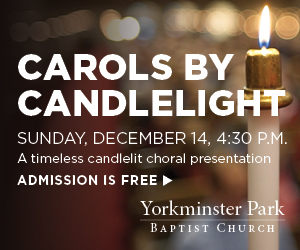Review
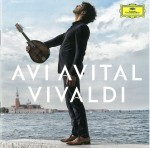 If you listen to Classical 96.3FM on anything resembling a regular basis you’ve probably heard the Israeli mandolinist Avi Avital’s astonishing rendition of Monti’s Czárdas (if you haven’t, you can always watch it on YouTube). It certainly meant that I approached his latest CD, Avi Avital Vivaldi (Deutsche Grammophon B0022627-02) with keen anticipation, and I wasn’t disappointed.
If you listen to Classical 96.3FM on anything resembling a regular basis you’ve probably heard the Israeli mandolinist Avi Avital’s astonishing rendition of Monti’s Czárdas (if you haven’t, you can always watch it on YouTube). It certainly meant that I approached his latest CD, Avi Avital Vivaldi (Deutsche Grammophon B0022627-02) with keen anticipation, and I wasn’t disappointed.
The mandolin has its roots in 17th- and 18th-century Italian music, and is particularly well suited to the style of Vivaldi. The composer’s one concerto for the instrument, the Concerto in C Major RV425, is featured here along with three concertos, a sonata and a short movement all transcribed for mandolin by Avital.
Two of the concertos – the A Minor RV356 and the G Minor RV315, “Summer,” from The Four Seasons, were originally for violin, and work particularly well on the mandolin, the two instruments sharing the same tuning. The Concerto in D Major RV93 was originally for lute. These are not huge pieces – the RV356 and RV425 concertos are both three-movement works less than eight minutes in length – but the predominantly upbeat tempos and Avital’s clean, agile playing along with the lovely, light and airy accompaniment by the Venice Baroque Orchestra make for delightful listening.
The Trio Sonata in C Major RV82, originally for violin and lute, features a beautifully full continuo sound contributed by harpsichord, lute and cello. The short movement is the Largo from the Concerto in C Major RV443, originally for flautino.
Avital is joined by tenor Juan Diego Flórez in a beautiful rendition of the traditional Venetian song La biondina in gondoleta, which provides a lovely end to an extremely pleasant and entertaining CD.
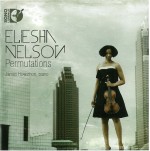 Permutations is the third CD from the American violist Eliesha Nelson, with pianist James Howsmon (Sono Luminus DSL-92186). The theme of the CD is American Classical Music and the Viola, although the earliest work on the disc only dates from 1953.
Permutations is the third CD from the American violist Eliesha Nelson, with pianist James Howsmon (Sono Luminus DSL-92186). The theme of the CD is American Classical Music and the Viola, although the earliest work on the disc only dates from 1953.
At first sight the opening work seems out of place, but the contemporary Russian composer Nikolai Kapustin has been greatly influenced by American jazz. His Sonata for Viola and Piano Op.69 doesn’t have quite the frenetic quality of his astonishing piano études, but is a spiky, jazzy work with a Gershwinesque middle movement.
The Two Pieces for Solo Viola by John McLaughlin Williams are a real tour de force, and Nelson is particularly outstanding in the technically demanding Toccata, with its echoes of the Dies Irae.
The Second Sonata for Viola and Piano by Ross Lee Finney (1906-97) is a 12-tone work, but this is serialism clearly influenced by the Romanticism of Alban Berg, and an extremely effective composition.
Wending, by Jeffrey Mumford (b.1955) is another challenging but very interesting solo work that draws another terrific performance from Nelson.
The Sonata for Viola and Piano by George Walker (b.1922) is an atonal – but quite accessible – work written in 1989. Another excellent performance by both artists rounds out a really interesting CD.
As with her previous CD of Russian Viola Sonatas, I find Nelson’s viola sound a bit nasal and tight at times, but her playing here really makes the most of the instrument’s full tonal range and colour. In addition to the standard CD, the package comes with a Pure Audio Blu-ray CD equipped with the mShuttle application, enabling you to access portable copies of the tracks on the disc.
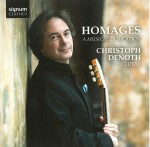 Homages – A Musical Dedication is the latest CD from Swiss guitarist Christoph Denoth, and presents a fairly traditional recital of predominantly Spanish compositions spanning more than four centuries (Signum Classics SIGCD404).
Homages – A Musical Dedication is the latest CD from Swiss guitarist Christoph Denoth, and presents a fairly traditional recital of predominantly Spanish compositions spanning more than four centuries (Signum Classics SIGCD404).
There are short pieces here by Joaquín Malats y Miarons, Luis de Narváez, Miguel Llobet, Fernando Sor, Manuel de Falla, Joaquín Turina, Isaac Albéniz and Joaquín Rodrigo, but the centrepiece of the CD is music by the Brazilian composer Heitor Villa-Lobos. His Schottish-Chôro is the second movement of his Suite popular brasileira, but the real gem here is Denoth’s performance of the five Preludes, four of them written as a specific homage to aspects of Brazilian life and one reflecting the influence of Bach’s music on the composer. The CD’s title connection is quite clear here, although with some of the other works on the disc it’s somewhat tenuous at best.
Still, no matter, for this is a lovely and substantial (over 70 minutes) program, beautifully played, and with a clear, resonant and not-too-close recording quality.
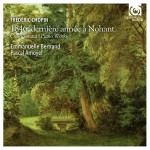 It’s been a while since I’ve received anything featuring the terrific French cellist Emmanuelle Bertrand, but she’s back with her regular partner, pianist Pascal Amoyel, on Chopin: 1846, dernière année à Nohant (harmonia mundi HMC 902199). The CD celebrates Chopin’s last summer on his lover George Sand’s estate, where he had spent seven years composing the majority of his works; the two would finally separate the following year. The beautiful Cello Sonata in G Minor Op.65, the last work published during Chopin’s lifetime, is at the heart of the CD, while Amoyel takes the spotlight for performances of the Barcarolle Op.60, the three Mazurkas Op.63, the three Valses Op.64, the Mazurka Op.67, No. 4 and the two Nocturnes Op.62.
It’s been a while since I’ve received anything featuring the terrific French cellist Emmanuelle Bertrand, but she’s back with her regular partner, pianist Pascal Amoyel, on Chopin: 1846, dernière année à Nohant (harmonia mundi HMC 902199). The CD celebrates Chopin’s last summer on his lover George Sand’s estate, where he had spent seven years composing the majority of his works; the two would finally separate the following year. The beautiful Cello Sonata in G Minor Op.65, the last work published during Chopin’s lifetime, is at the heart of the CD, while Amoyel takes the spotlight for performances of the Barcarolle Op.60, the three Mazurkas Op.63, the three Valses Op.64, the Mazurka Op.67, No. 4 and the two Nocturnes Op.62.
The Cello Sonata wasn’t completed until the time of Chopin’s separation from Sand in July 1847. It’s a strong, turbulent work that is given a passionate and nuanced performance by Bertrand and Amoyel, who clearly have an innate understanding of how each other plays. Amoyel’s sensitive interpretations of the solo piano pieces, beautifully recorded, are a pure delight.
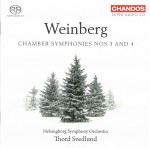 The music of the Polish Soviet composer Mieczysław Weinberg, 3 friend and colleague of Dmitri Shostakovich, certainly seems to be turning up on CD more frequently these days. The Swedish conductor Thord Svedlund has already directed four Chandos Super Audio CDs of Weinberg’s concertos and symphonies, and now conducts the Helsingborg Symphony Orchestra in excellent performances of Weinberg’s Chamber Symphonies Nos.3 and 4 (Chandos CHSA 5146).
The music of the Polish Soviet composer Mieczysław Weinberg, 3 friend and colleague of Dmitri Shostakovich, certainly seems to be turning up on CD more frequently these days. The Swedish conductor Thord Svedlund has already directed four Chandos Super Audio CDs of Weinberg’s concertos and symphonies, and now conducts the Helsingborg Symphony Orchestra in excellent performances of Weinberg’s Chamber Symphonies Nos.3 and 4 (Chandos CHSA 5146).
Both works, from 1990 and 1992 respectively, were written late in the composer’s life, although three of the four movements of the Chamber Symphony No.3 Op.151 for string orchestra recycle material from his 1945 String Quartet No.5.
The Chamber Symphony No.4 Op.153 was the last work Weinberg completed, and is scored for string orchestra with obbligato clarinet and triangle, the latter having just four notes in the entire piece. It incorporates quotes from some of Weinberg’s earlier works, but apparently was never intended as a summation of his life and work.
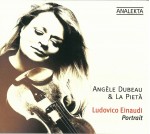 It’s difficult to know exactly what to say about Ludovico Einaudi – Portrait, the new CD from Angèle Dubeau & La Pietà (Analekta AN 2 8738). It’s very similar in content to some of her previous CDs, which will be good or not so good news depending on your point of view.
It’s difficult to know exactly what to say about Ludovico Einaudi – Portrait, the new CD from Angèle Dubeau & La Pietà (Analekta AN 2 8738). It’s very similar in content to some of her previous CDs, which will be good or not so good news depending on your point of view.
The Portrait series presents contemporary composers who write with what Dubeau calls a unique musical signature, although Glimpse might be a more accurate title. Einaudi is a classically trained composer and pianist who has achieved great commercial success in what is generally termed the World Music field, and is represented here by 13 short pieces with titles like Life, Experience, Run, Time Lapse and Giorni dispari.
Eleven of the pieces, though, are arrangements by François Vallière and Angèle Dubeau – what Dubeau calls “rethinking its character while bringing a new sonic dimension;” moreover, they are nearly all essentially the same length, hovering around the five-minute mark – a cynic might think with radio playlists clearly in mind.
They also tend to sound much the same: there is very little harmonic, rhythmic or melodic variation or adventure, and while they are clearly well-crafted, attractive and communicative on a certain level there is very little change of mood.
The booklet notes again highlight Dubeau’s career album sales figures, which are in excess of an astonishing 500,000; it’s easy to hear why. Dubeau’s CDs in this particular vein may well be aimed at a specific commercial market, but with excellent arrangements of pleasant, undemanding popular music, beautifully played and recorded, they nevertheless unfailingly provide high quality performances of music that clearly continues to appeal to many.
It’s probably a bit too simplistic to say that if you hear a string work that sounds like some Dvořák that you haven’t heard before, then it’s probably by his son-in-law Josef Suk (although that certainly works for the Serenade for Strings) but there’s no getting away from the huge similarities in their music.
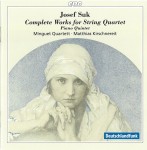 Josef Suk Complete Works for String Quartet is a new 2-CD set featuring the Minguet Quartett (cpo/Deutschlandfunk cpo 777 652-2). CD1 has the two String Quartets, while CD2 has a selection of short single movements as well as the Piano Quintet Op.8, in which the Minguet is joined by pianist Matthias Kirschnereit.
Josef Suk Complete Works for String Quartet is a new 2-CD set featuring the Minguet Quartett (cpo/Deutschlandfunk cpo 777 652-2). CD1 has the two String Quartets, while CD2 has a selection of short single movements as well as the Piano Quintet Op.8, in which the Minguet is joined by pianist Matthias Kirschnereit.
The String Quartet No.1 in B-Flat Major Op.11 is an early work from 1896, when Suk was 22, and is a lovely work with a particularly beautiful slow movement. Not surprisingly, there’s a good deal of Smetana influence here as well. Some 20 years later Suk revisited the work and re-wrote the final movement, although the resulting Quartet movement in B-Flat Major, also included here, never established itself as part of the complete work.
In the String Quartet No.2 Op.31 from 1910-11 we are in a quite different world; the Bohemian feel of Dvořák and Smetana is still there, but there is a heightened chromaticism – particularly in the second movement – and an almost Impressionistic character to the writing.
The Piano Quintet in G Minor Op.8 is another early work, from 1888, but was revised by Suk in 1915; it is again redolent of Dvořák, but the combination of its purely Romantic themes with Suk’s more modern later style makes for some interesting moments.
Two of the four short pieces that complete CD2 had their origins in early works: the Minuet in G Major from 1911 first appeared in two piano works a dozen years earlier; and the Barcarolle is a 1923 re-working of a middle movement from an early 1888 string quartet that Suk did not include in his list of recognized works.
The Ballade in D Minor was one of three Ballades the teenage Suk wrote in 1890, and the Meditation on the Old Bohemian Hymn “St. Wenceslas” Op.35a is a patriotic piece written in 1914. All four short pieces are quite delightful.
Performance and recording standards are fine throughout.
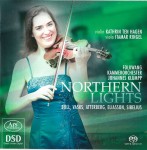 It’s always gratifying when you have no idea what to expect from a CD and it turns out to be an absolute delight. That’s exactly what happened with Northern Lights, a new Super Audio Hybrid CD that covers a period of more than 150 years of Scandinavian music and features violinist Kathrin Ten Hagen and the Folkwang Kammerorchester under Johannes Klumpp (ARS 38 157).
It’s always gratifying when you have no idea what to expect from a CD and it turns out to be an absolute delight. That’s exactly what happened with Northern Lights, a new Super Audio Hybrid CD that covers a period of more than 150 years of Scandinavian music and features violinist Kathrin Ten Hagen and the Folkwang Kammerorchester under Johannes Klumpp (ARS 38 157).
Solitude sur la Montagne is composer Johan Svendsen’s string orchestra arrangement of the lovely Herd-Girl’s Sunday by the 19th-century Norwegian violin virtuoso Ole Bull. It’s a short, wistful melody with more than a touch of Grieg (Bull’s brother was Grieg’s uncle).
The Latvian Peteris Vasks (b. 1946) is one of three composers on this CD whose work I didn’t know. His Vox amoris: Fantasy for violin and string orchestra is a quite lovely tonal work that draws some simply beautiful playing from Ten Hagen.
Sweden’s Kurt Atterberg (1887-1974) wrote his Suite No.3 Op.19, 1 for violin, viola and string orchestra in 1917. It’s a short, accessible work in three movements in which Ten Hagen is joined by violist Itamar Ringel.
Anders Eliasson (1947-2013) was also Swedish, and is represented here by his Concerto for violin and string orchestra from 1992. It’s quite different to anything else on the CD – very rhythmic, energetic and complex, and tonally quite challenging.
Sibelius’ Suite for violin and string orchestra Op.117 from 1929 was written at the prompting of Carl Fischer, his American publisher, who then decided that the work wouldn’t be profitable and did not publish it. It remained unpublished during Sibelius’ lifetime, and wasn’t performed until 1990. Its three short movements – Country Scenery, Evening in Spring and In the Summer – are everything you would expect them to be, and bring an entertaining and highly satisfying CD to a close.



